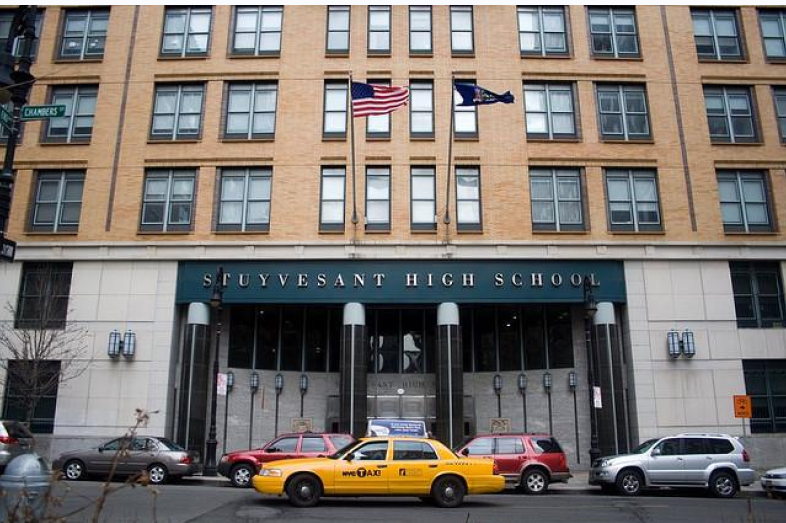

New figures released this week show that for the second year in a row, Latino students accounted for only 7 percent of those who were accepted to New York City’s elite public high schools.
In a school district where 40 percent of the students are Latino, spots at NYC’s eight elite high schools — those which require a Specialized High School Admissions Test — have gone to a large majority of Asian and white students, The New York Times reports.
After accepting 41 Hispanic students last year, Stuyvesant High School — the hardest of the elite to get into, according to The New York Times — accepted 20 Hispanic students and 10 black students this year. Staten Island Technical High School accepted the lowest number of Latino students at four — 15 fewer than last year, Amy Zimmer of DNAinfo New York writes.
Lawmakers and advocacy groups have argued that the sole use of the SHSAT for admission has contributed to the lack of diversity at the elite schools, according to a report by The Research Alliance for New York City Schools, with officials like Chancellor Carmen Fariña saying the elite high schools should better reflect the demographics of the city. Others have called it an “embarrassment.”
The U.S. Department of Education is currently reviewing a complaint filed by a coalition of education and civil rights groups claiming that the SHSAT-based admissions policy is racially discriminatory.
But supporters of the test argue its use keeps academic standards high and the process objective. According to the Research Alliance’s findings, adding other criteria to the admission process could increase diversity, but, likely, not by a lot. Considering test scores, grades and attendance — as some have suggested — could actually decrease the number of black and Asian students who get into these specialized schools, though it may work in favor of white and Latino students. It would also “tip the gender balance” in girls’ favor.
Researchers also found that there is a significant overlap in the students who would be admitted by the alternate criteria and those that have already been accepted based on their SHSAT score.
“The only simulated admissions rule that would substantially change the demographic mix of the specialized high schools—and reduce the concentration of offers in a small number of middle schools—is a rule that guarantees admission to all students across the City who are in the top 10 percent of their middle school,” the report states. “This rule would have a large impact on diversity, but at the cost of reducing the average achievement of incoming students, particularly in math.”
So what can be done? Larry Cary, president of the Brooklyn Tech Alumni Foundation, told The New York Times the focus should be on increasing the number of black and Hispanic students who take the test and preparing them to perform well.
According to the report, among students with the same level of achievement on the seventh grade state English Language Arts and math exams, girls, low-income students and Latinos were three percentage points less likely to take the SHSAT, while Asian students were 17 percentage points more likely to do so. Latino students were 6 percentage points less likely to receive an offer of admission.
The report suggests various ways NYC could boost minority test-taking numbers. All students who achieve a certain score on their ELA and math tests could automatically receive an invitation to take the SHSAT. Schools and/or community-based organizations could boost access for free, high-quality SHSAT prep and provide families with more information about specialized schools early on, researchers write.
Take groups like Breakthrough New York, for instance, which provides test prep, enrichment courses, tailored guidance and other services to low-income eighth-graders. Breakthrough’s students fare better than the citywide average: 40 percent get accepted to the specialized schools.